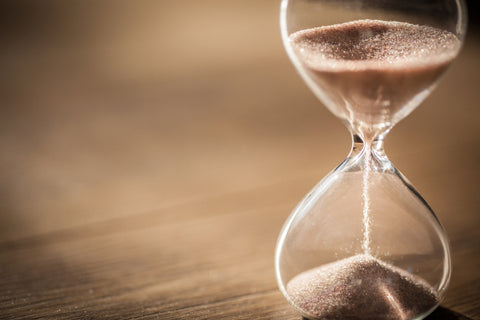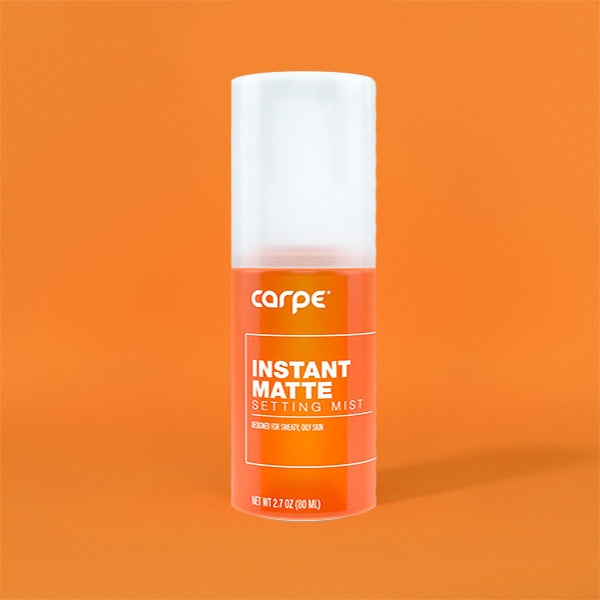How to Tell if I Have Hyperhidrosis
Are you dealing with excessive sweating? If you’re a super sweater, here's how you can tell whether your symptoms may be related to a condition called hyperhidrosis.
What is Hyperhidrosis?
Hyperhidrosis is a medical condition categorized by excessive sweating that isn’t related to temperature regulation. It affects roughly 3% of people and it’s very treatable.[1]
If you have hyperhidrosis then you may experience symptoms like:
- Sweating that specifically affects your hands, feet, underarms, face or groin.
- You can’t find an environmental trigger for your sweat like heat.
- Your sweat so much that it impacts your self confidence and interferes in your personal or work life.
- You have to change clothes often due to sweat problems.[1]
You get the idea - hyperhidrosis causes sweating that’s disruptive and more or less constant. It’s important to know that there are two types of hyperhidrosis. They are called primary focal hyperhidrosis, and secondary generalized hyperhidrosis. In this article we are going to focus on the symptoms of primary focal hyperhidrosis.[1]
However, if you have excessive sweating that doesn’t seem related to primary hyperhidrosis read our article on secondary generalized hyperhidrosis as it’s caused by underlying health conditions and it’s important to get them looked at.
Back to primary hyperhidrosis! Here are some quick facts to know about the condition:
- It’s categorized by profuse sweating in one or more specific areas of the body, the main areas affected are:
- Hands
- Feet
- Underarms
- Face
- Groin
- Breast
- It typically starts in adolescence or during early adulthood. Sometimes kids can experience excessive hyperhidrosis as well.
- It’s not a result of any other disease or disorder - the excessive sweating itself is the disorder.
- Men are more likely to have it.
- It tends to run in some families.
- The sweating tends to be symmetrical on the body. For example, if your right hand sweats your left hand will too.
- It’s treatable![1]
Factors to Consider When Self-Diagnosing Hyperhidrosis
If you can relate to our description of hyperhidrosis consider these factors when self diagnosing. The first thing to know is that you should consult a doctor! Specifically, a dermatologist who’s trained in dealing with hyperhidrosis. If you’re still interested in more information consider the following:
1. Temperature and Weather

First and foremost, you should be cognizant of whether or not you sweat in response to high temperatures in your surrounding environment. Since sweat is produced primarily as a means to cool the body via thermoregulation, all people should sweat when the temperature is high. Typically, the higher the temperature, the more sweat produced to keep the body cool. However, the first sign of both primary and secondary hyperhidrosis is whether or not your body sweats even when the temperature is at a comfortable, or even cool, level.
For those with hyperhidrosis, they have sweat glands that are overactive because they are receiving and reacting to too many signals from the spinal cord and brain. Due to the fact that these synaptic signals are sent regardless of temperature, gauging the temperature of the environment when sweating occurs is a strong indicator of potential hyperhidrosis.
2. Environmental Triggers
In addition to temperature, you should be aware of whether or not other environmental triggers are causing excessive sweating on a repeated basis. For example, situations that are anxiety producing like meeting new people, anticipating handshakes, preparing for major assignments or tests, and public speaking may prompt an individual’s hyperhidrosis to worsen. This is because hyperhidrosis and anxiety are closely related.
When thinking of your own sweatiest moments, are they tied to a specific set of conditions? If so, you may have primary focal hyperhidrosis that is triggered by those specific conditions.
However, an important distinction between hyperhidrosis and stress sweating related to anxiety must be made; just because someone sweats in a specific situation doesn’t mean they have hyperhidrosis. Most people will sweat a little before a business meeting, and many people find the idea of a public speech to be intimidating.
The important distinction is to determine whether or not your body is producing sweat to aid with thermoregulation (i.e. keeping you cool and calm when you become a little worried before an event) or producing sweat at an excessive and uncontrollable rate.
3. Timing of Your Sweat

The third factor to evaluate in order to tell if a person’s sweating is indicative of hyperhidrosis is the length of time a person has been experiencing excessive sweating. If you’ve been sweating excessively since adolescence or young adulthood it’s a sign you may have primary hyperhidrosis. If it just started suddenly later in life it’s less likely to be secondary hyperhidrosis.
If you think you might have hyperhidrosis there are many ways to manage your sweat and there are several treatments you can try. A great starting place is finding a good antiperspirant - we recommend Carpe antiperspirant lotion. They have products tailored to each specific part of your body and their special formula is gentle on skin.
Are you still curious about whether you have hyperhidrosis? Take this quiz.
Sources
- Pariser, D. M. (2014). Hyperhidrosis (4th ed., Vol. 32). Amsterdam: Elsevier Pub. Co., 2014. Retrieved from https://www.elsevier.com/books/hyperhidrosis-an-issue-of-dermatologic-clinics/pariser/978-0-323-32607-0
- Kamudoni, P., Mueller, B., Halford, J., Schouveller, A., Stacey, B., & Salek, M. (2017, June 8). The impact of hyperhidrosis on patients' daily life and quality of life: A qualitative investigation. Retrieved May 21, 2018, from https://hqlo.biomedcentral.com/articles/10.1186/s12955-017-0693-x
- MiraMar Labs, O'Shaughnessy, K., & Melkerson, M. (2011). 510(k) Summary. Division of Surgical, Orthopedic And Restorative Devices. Retrieved May 23, 2018, from https://www.accessdata.fda.gov/cdrh_docs/pdf10/K103014.pdf.






16790753702383.jpg?v=1679075372)

16790746985853.jpg?v=1679074700)


16790757289763.jpg?v=1679075731)











